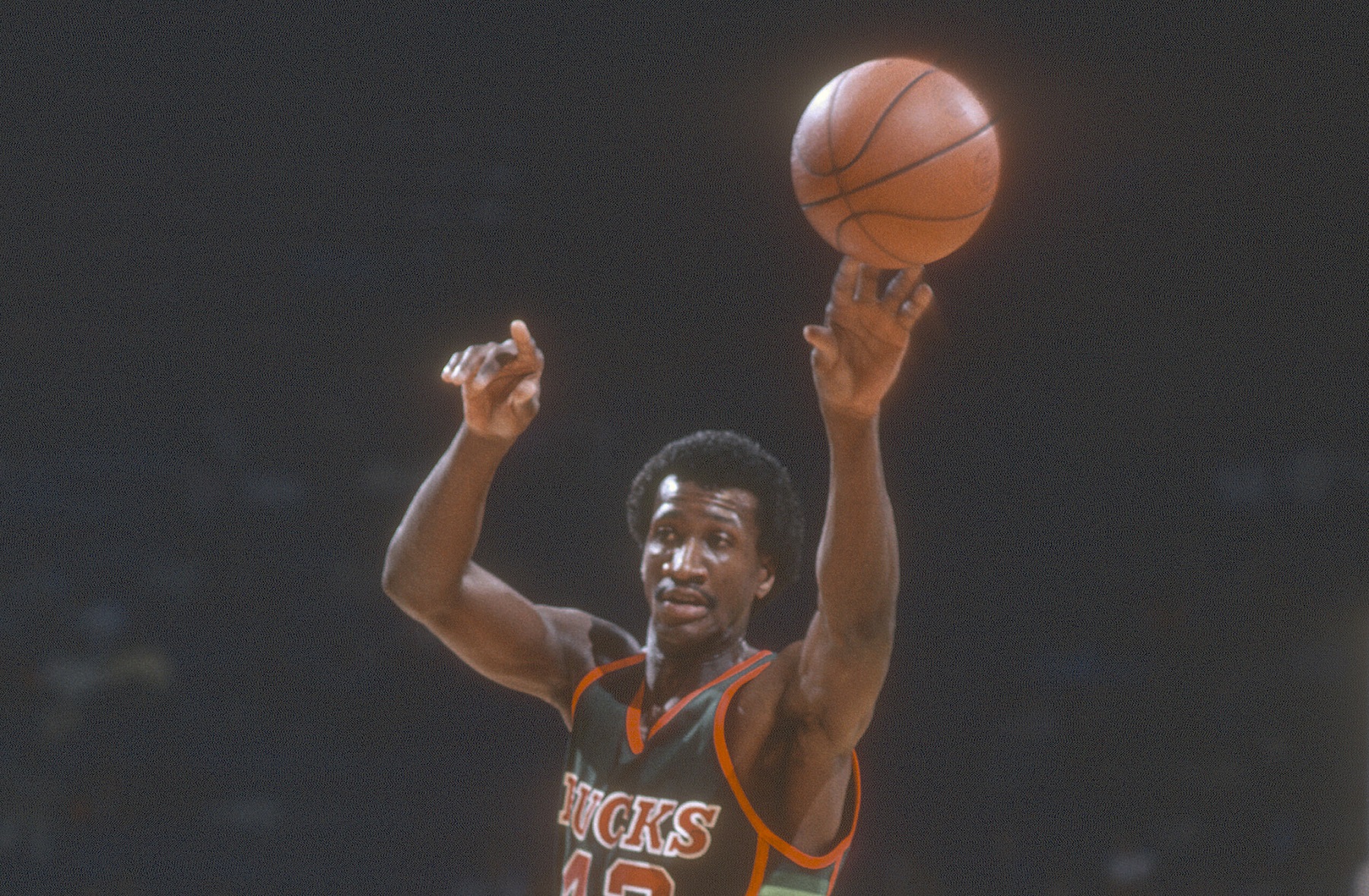NBA
The Crazy Time Harvey Catchings Played for Both Teams in 1 NBA Game

For a man who didn’t produce much, Harvey Catchings carved out a nice stay in the NBA, lasting 11 seasons. While plenty of power forwards – and point guards for that matter – equaled his 3.2 points and 5.0 rebounds per contest for the Philadelphia 76ers, New Jersey Nets, Milwaukee Bucks, and Los Angeles Clippers, only two others can match his feat of playing for both teams in the same game.
Harvey Catchings was a longshot who made it in the NBA
RELATED: How Markelle Fultz Went From Being the Biggest Bust in NBA History to Getting $50 Million
What’s true today about the NBA draft was also true in 1974: If you’re not good enough to be selected in the first 30 picks, then the odds of sticking around the league for more than a cup of coffee are long. That’s why Harvey Catchings is deserving of all credit that comes his way.
There were 18 NBA teams in 1974 when Catchings came out of Hardin-Simmons, and the draft went 10 rounds deep. Catchings had averaged 16.7 points and 11.1 points a game on a Hardin-Simmons team that included Stedman Graham, the longtime partner of Oprah Winfrey.
UCLA great Bill Walton, Providence’s Marvin “Bad News” Barnes, and North Carolina State’s Tom Burleson were the top three picks in that year’s draft. Other notables included Jamaal Wilkes and Maurice Lucas in the first round, and John Drew in the second. The Phoenix Suns selected George Gervin 40th overall in the third round, but he opted to start his career in the rival ABA.
Two picks later, the Philadelphia 76ers drafted the 6-foot-9 Catchings, who would go on to appear in 725 NBA contests in 11 seasons. The only player taken behind him to have lasted longer was fourth-rounder Mickey Johnson, who played in 904 games.
The most interesting game of Harvey Catchings’ career
RELATED: Doc Rivers Finally Tells Sixers Fans What They’ve Been Desperately Waiting to Hear
On Nov. 8, 1978, the Philadelphia 76ers were leading the New Jersey Nets, 84-81, when referee Roger McCann called a charging foul on Bernard King of the Nets for plowing into Steve Mix midway through the third quarter. King had collected a technical foul earlier in the game, so when he got T’d up again for going after McCann over the call, it meant an automatic ejection.
That didn’t sit well with Nets coach Kevin Loughery, who had also been hit with an earlier technical foul. When Loughery crossed the line for a second time, referee Richie Powers T’d him up, triggering another automatic ejection.
When neither King nor Loughery left the court in a timely fashion, Powers – who had a famously short temper – assessed a third technical foul on each. Once things settled down, Phil Jackson took over the Nets’ bench, Philadelphia shot a bunch of free throws, and the 76ers eventually walked away with a 137-133 victory in two overtimes despite Eric Money’s 37 points.
Or so they thought.
The Nets felt they had grounds for a protest because NBA rules did not allow for more than two technical fouls to be called against a player or coach. When the protest reached the office of Larry O’Brien, the commissioner concurred.
How did Harvey Catchings play for both teams in one game?
RELATED: Allen Iverson Credited the Late John Thompson for ‘Saving My Life’
Once Larry O’Brien upheld the New Jersey Nets’ protest of the 137-133 loss to the Philadelphia 76ers, that game had to be replayed from the 5:50 mark of the third quarter and the 76ers leading, 84-81, according to the Los Angeles Times. However, scheduling didn’t allow for a quick turnaround. The league decided that the game would resume March 23, 1979, in Philadelphia.
But a funny thing happened on the way to the do-over. On Feb. 7, New Jersey traded Eric Money and Al Skinner to Philadelphia for Harvey Catchings and Ralph Simpson. That meant that the four would be playing for new teams in an old game, which is exactly what happened with three of them.
The protest wiped out a chunk of Money’s huge night in the original game, so he tallied 23 points for New Jersey and then four with the 76ers. Simpson didn’t score for the Nets and posted eight for Philadelphia. Catchings finished with eight points for the Nets and none for the 76ers, and Skinner never left the bench for either team.
Philadelphia won the replay, 123-117. In the regularly scheduled game, the 76ers won, 110-98.
Like Sportscasting on Facebook. Follow us on Twitter @sportscasting19.











